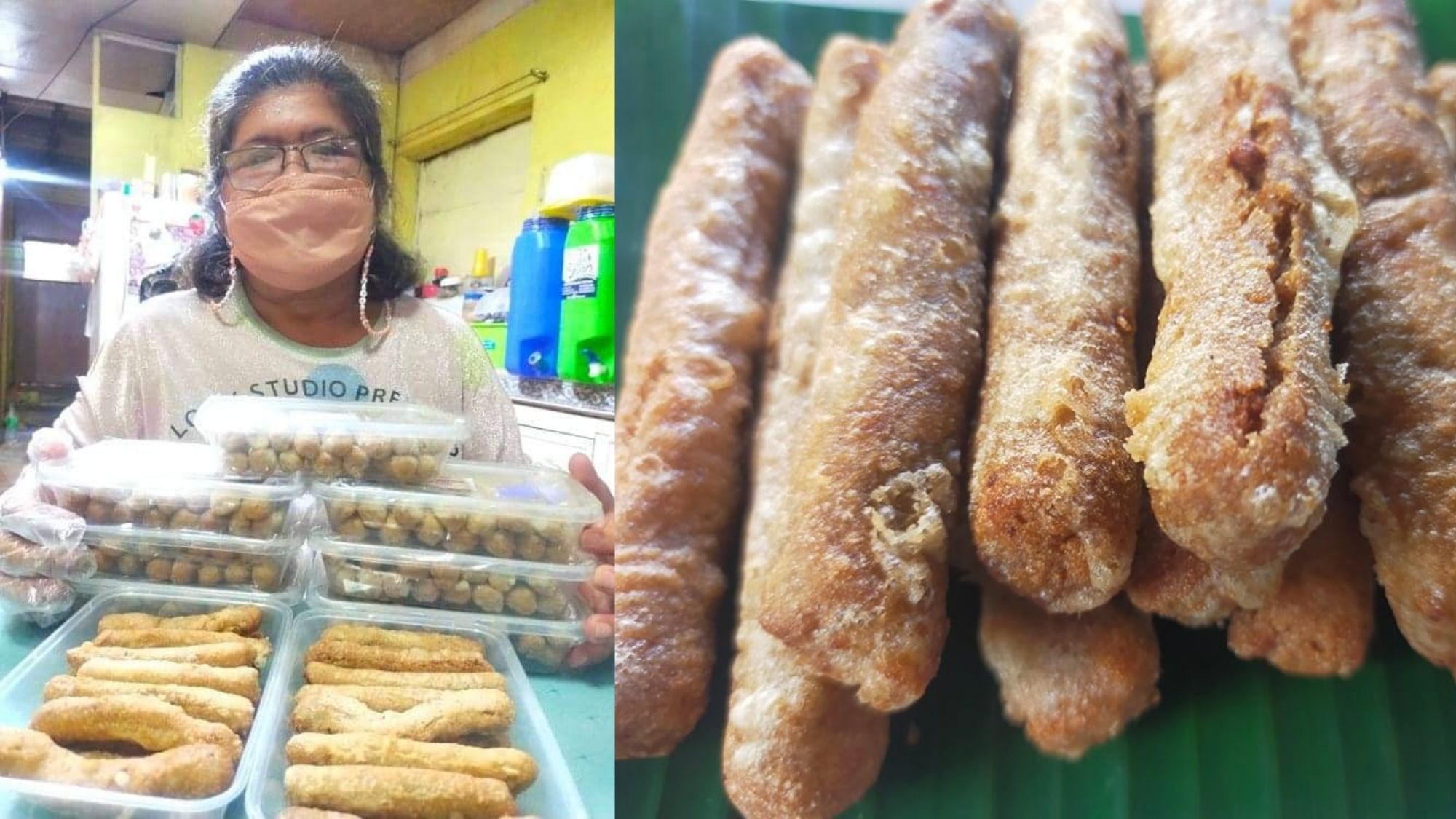“This heirloom delicacy is frequently associated with time-consuming and labor-intensive procedures and preparations, which is why Panganan is only produced on rare occasions during Holy Week.”
Panganan is a dry, powdery snack made from melted sangkaka and rice flour. These are combined and shaped into finger-like sticks. These sticks would then be deep-fried until golden brown in a clay stove in the past.
These kakanin sticks were once upon-a-time lovingly cooked for Ermita churchgoers as after-Mass snacks.
But for 56-year-old Florida Labios, making Panganan is a family tradition.
Panganan is one of the native delicacies of the Labios family in Barangay Lakawan, Tayabas City, with the tradition being started by her mother Gerarda in the late 1950’s.
"I come from a family that is completely obsessed with kakanin. The Labios cook with such passion, learning and mastering the trade, and passing down heirloom family recipes from generation to generation," Labios said.
But unlike other delicacies in Quezon province, Panganan is not so popular.
“This heirloom delicacy is frequently associated with time-consuming and labor-intensive procedures and preparations, which is why Panganan is only produced on rare occasions during Holy Week,” Labios added.
Labios said Marinduque has its own version of Panganan. But for her, Panganan is Tayabense: simple yet flavorful.
Some believe, on the other hand, that this traditional merienda is already a "vanishing tradition," a sad reality brought on by urbanization and fast-paced living.
Tags: #food, #feature, #OpinYonQuezon, #TayabasQuezon, #Panganan
